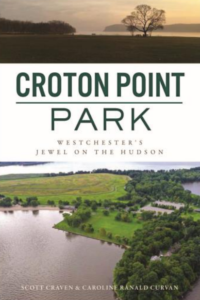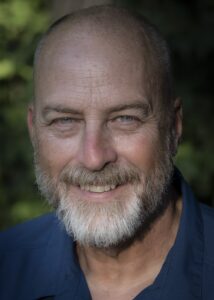 Less than an hour by train from New York City, Croton Point Park encompasses miles of Hudson River shoreline with astonishing views and remnants of the region’s past. Ancient shell mounds shed light on the Indigenous peoples who inhabited the area for generations prior to European colonization. Remains of the first commercial vineyard in the Northeast are just steps away from historic brickyards that helped build Manhattan.
Less than an hour by train from New York City, Croton Point Park encompasses miles of Hudson River shoreline with astonishing views and remnants of the region’s past. Ancient shell mounds shed light on the Indigenous peoples who inhabited the area for generations prior to European colonization. Remains of the first commercial vineyard in the Northeast are just steps away from historic brickyards that helped build Manhattan.
Although the point served as a dumping ground for much of the twentieth century, local efforts have restored the park into a model of environmental conservation. Today, bald eagles have returned to the delight of visitors, who also explore the remarkable landmarks, cruise the waters of the Hudson or enjoy scenic picnics.
About the Authors
 Scott Craven has lived or worked in Ossining for 50 years, including 32 years with the Village of Ossining Police Department, including as police captain. As the historian of the Town of Ossining and an avid fisherman, paddler and cyclist, he knows the Point better than most. His master’s thesis focused on an environmental history of the area. Over the years, he has naturally connected with many people whose passion and expertise regarding different aspects of the Point helped weave its history into a compelling story. He currently is a library assistant in the Ossining Public Library.
Scott Craven has lived or worked in Ossining for 50 years, including 32 years with the Village of Ossining Police Department, including as police captain. As the historian of the Town of Ossining and an avid fisherman, paddler and cyclist, he knows the Point better than most. His master’s thesis focused on an environmental history of the area. Over the years, he has naturally connected with many people whose passion and expertise regarding different aspects of the Point helped weave its history into a compelling story. He currently is a library assistant in the Ossining Public Library.
 Caroline Ranald Curvan, who has lived in Ossining since 2000, is a professional researcher and writer. She recently led the research team for a critically acclaimed American Masters/PBS documentary entitled Laura Ingalls Wilder: Prairie to Page. A writer with popular local blog (OssiningHistoryontheRun.com) and an adjunct professor of research and composition, she is a deep and passionate student of history.
Caroline Ranald Curvan, who has lived in Ossining since 2000, is a professional researcher and writer. She recently led the research team for a critically acclaimed American Masters/PBS documentary entitled Laura Ingalls Wilder: Prairie to Page. A writer with popular local blog (OssiningHistoryontheRun.com) and an adjunct professor of research and composition, she is a deep and passionate student of history.
Q+A with Scott Craven and Caroline Ranald Curvan
What was your primary intention in writing the book?
Caroline Ranald Curvan (CRC): To share the long and varied history of this remarkable bit of land, and to alert people to the history that surrounds us everywhere if you just take the time to notice it.
Scott Craven (SC): I’m a firm believer that the more you understand our valley, the more you care about it and adopt a personal creed of stewardship. Hopefully this book helps folks with that journey.
***
Who is the book’s target audience?
CRC: Anyone who’s curious and interested in history. It really is amazing how you can practically see the whole history of this continent reflected in this one place.
SC: Two groups of people: The first – people I grew up with in the area. Most of us just thought about the Point as “the Dump,” with its perpetual cloud of gulls hovering over it, and a place to be avoided. It’s a lot different now. Through the efforts of groups like Riverkeeper, Saw Mill River Audubon and Westchester County, the capped landfill is now a great place to walk as well as see nature.
The second – the people who are exploring the Hudson Valley for the first time. Croton Point is THE best place to see all the historical themes of the Valley! In a two-hour walk, pedal, or paddle, you can see so many, represented and supported by knowledgeable, generous experts.
***
Did anything surprise you in your research?
CRC: So many things! The most remarkable was randomly connecting with Dwayne Mann, the assistant house manager at the Gershwin Theater [in Manhattan] and learning that his great-grandparents lived on Croton Point in the 1900s. The fact that there was a family picture of them from that time really made the stories about the brickyards come to life in a way they hadn’t before for me.
Also eye-opening was seeing how many cultural artifacts have been found on Croton Point left by the indigenous people who’d lived there for thousands of years before the Europeans arrived. (Learning not to call this era “pre-history” was also game-changing. It’s ALL history!)
SC: I’ve spent a lot of time on Croton Point, and I was amazed at the history in the early 19th century; the origins of the park, the aviation history and the early recreation. It was all new to me.
***
What was the biggest challenge?
CRC: Figuring out how to write a book with another person. Neither one of us had had this sort of experience before, so we had to learn the best ways to work together. But we were very lucky with the amount of information that’s out there, and in the generosity of the various archives, historical societies, local experts and photographers. There’s so much more we could have included.
SC: We could have easily spent eight months learning about knapped lithic points or bird migration or any number of other topics that are well represented, with local experts more than willing to share their expertise. It was tempting and a constant concern about “getting too far into the weeds” and not focusing on the big picture.
***
How did you divide the work between you?
CRC: We originally evenly split up the chapters between us, with each writing the first draft of our assigned chapters. (We assigned ourselves the chapters that we each knew the most about and/or were most interested in.) Then we read the other’s chapters, making suggestions/additions.
SC: We were able to use some of the platforms adopted by so many during that time (Facetime, Zoom, document sharing) to help us collaborate remotely.
***
What do you see as the primary takeaway for a reader?
CRC: I’d have to repeat the John Stilgoe quotation we have in the book: “Outside lies utterly ordinary space open to any casual explorer willing to find the extraordinary. Outside lies unprogrammed awareness . . . outside lies magic.” We want people to open their eyes to the history that lies all around and be curious enough to ask questions and learn.
SC: Croton Point and the Hudson Valley are special places and they should be experienced.
***
Can we look forward to similar projects?
CRC: Yes! We are in the early stages of a new local history book. All will be revealed shortly on our website HudsonValleyChronicles.com.
About the Book
- Price > $23.99
- Pages > 176
- ISBN > 978-1-4671-5238-9
- arcadiapublishing.com/imprints/the-history-press








I will definitively buy this book. Taught Ossining’s history for many years, can’t get enough. Looking forward to others that you’ll write.
Hope you include the part it played in the capture of Major Andre .
Unfortunately I have a conflict with your talk at the Van Cortlandt Schoolhouse on the 15th. I have done research and have written (article published in The Westchester Historian Winter 2022) about the first African American owned Golf Course in Westchester, and stumbled upon some of the same folks trying to purchase and develop Croton Point in 1923, then the county used eminent domain to keep that from happening. I expect that this would be part of your presentation, and I really would like to learn more about who were the people in the Hudson River Development Corp.